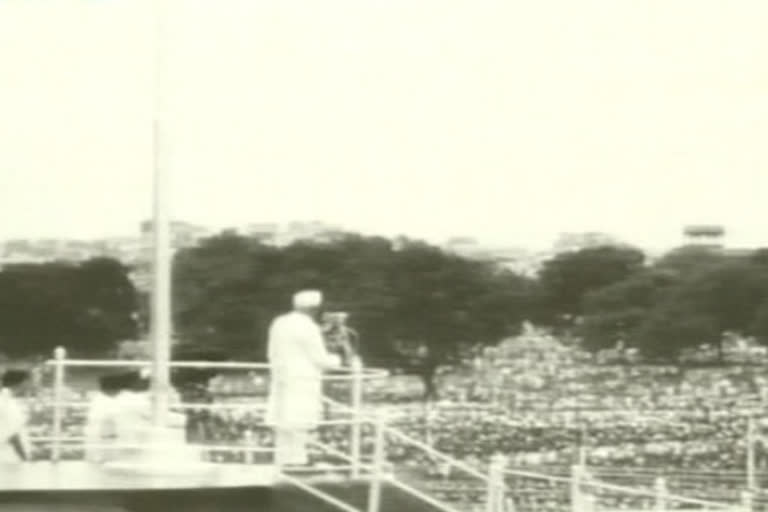Dausa: The 'Har Ghar Tiranga' campaign to hoist the tricolour atop every household across the country to celebrate 75 years of Independence is in full swing. However, in Aluda village in the Dausa district of Rajasthan, the tryst with the national flag is not something new. It is as old as the country's independence with the first tricolour hoisted by the first Prime Minister Jawaharlal Nehru believed to have been made by the weavers from the Rajasthan village.
It is believed that the first tricolour that was hoisted on the Red Fort was made by the weavers of Aluda of Dausa with their own hands. After the country became independent on 15 August 1947, there was an atmosphere of celebration across the country. After independence, it was decided that the tricolour would be hoisted at the Red Fort.
With the freedom fighters expressing a desire to hoist a Khadi flag, tricolours of the desi cloth started arriving in Delhi from all across the country. Making a choice was not easy. In the end, the cloth tricolour prepared by the weavers Chauthmal, Nangal Ram and Bhauri Lal Mahawar of Aluda village of Dausa was selected and the same tricolour was hoisted on the ramparts of the Red Fort, it is said. The cloth made by Chauthmal weavers was taken to Govindgarh by the freedom fighters Deshpande and Tat Saheb, and was later dyed in Govindgarh and given the form of a tricolour.
The freedom fighters took this flag to Delhi, where the country's first Prime Minister Pandit Jawaharlal Nehru unfurled the tricolour at the Red Fort. But there is also another opinion according to which four tricolours came from different parts of the country -- two from Dausa and Govindgarh and two from other places. Dausa Khadi Committee Chairman Anil Sharma said that there is no concrete evidence that the tricolour made of Dausa cloth is the first flag that was hoisted.
Also read: 10 crore and counting: Surat workers make tricolours without wearing footwear
"But after the independence of the country, from time to time, the Chauthmal weaver was remembered at the national level, due to which it was believed that the flag of cloth was prepared by Chauthmal, a weaver of Aluda, and was hoisted on the Red Fort," Sharma said. Sharma said that it took 2 months for Chauthmal to make the Khadi cloth for the tricolour.
To honour the connection of the tricolour with Dausa, the Dausa Khadi Committee was established in 1967 and after that, the tricolour cloth made by the weavers of Dausa was taken to every nook and corner of the country. At present, a large number of weavers prepare cloth at Aloda, Banetha, Jasoda and the district headquarters of Dausa.
The clothes made by them are sent to Mumbai for processing and thereafter to the market. Apart from Dausa, the tricolour cloth is also prepared in Barabanki and Gwalior. More tricolour processing units are established in Hooghly, Marathwada and Mumbai, where clothes are given the form of tricolour. Over the years, Dausa has emerged as a hub for making thread and cloth.
These manufacturing units are also a source of employment for several weavers across the country. Earlier, when the weavers used to spin the spinning wheel by hand, they could not get enough wages in a day. But now with the advent of electric charkhas, the weavers also get enough wages. While Chauthmal's family have shifted from Aloda, the children of his younger brothers are still in the village and are carrying forward the family tradition of cloth making.
Not only his family, but the entire Dausa district remembers Chauthmal for its proud history.



